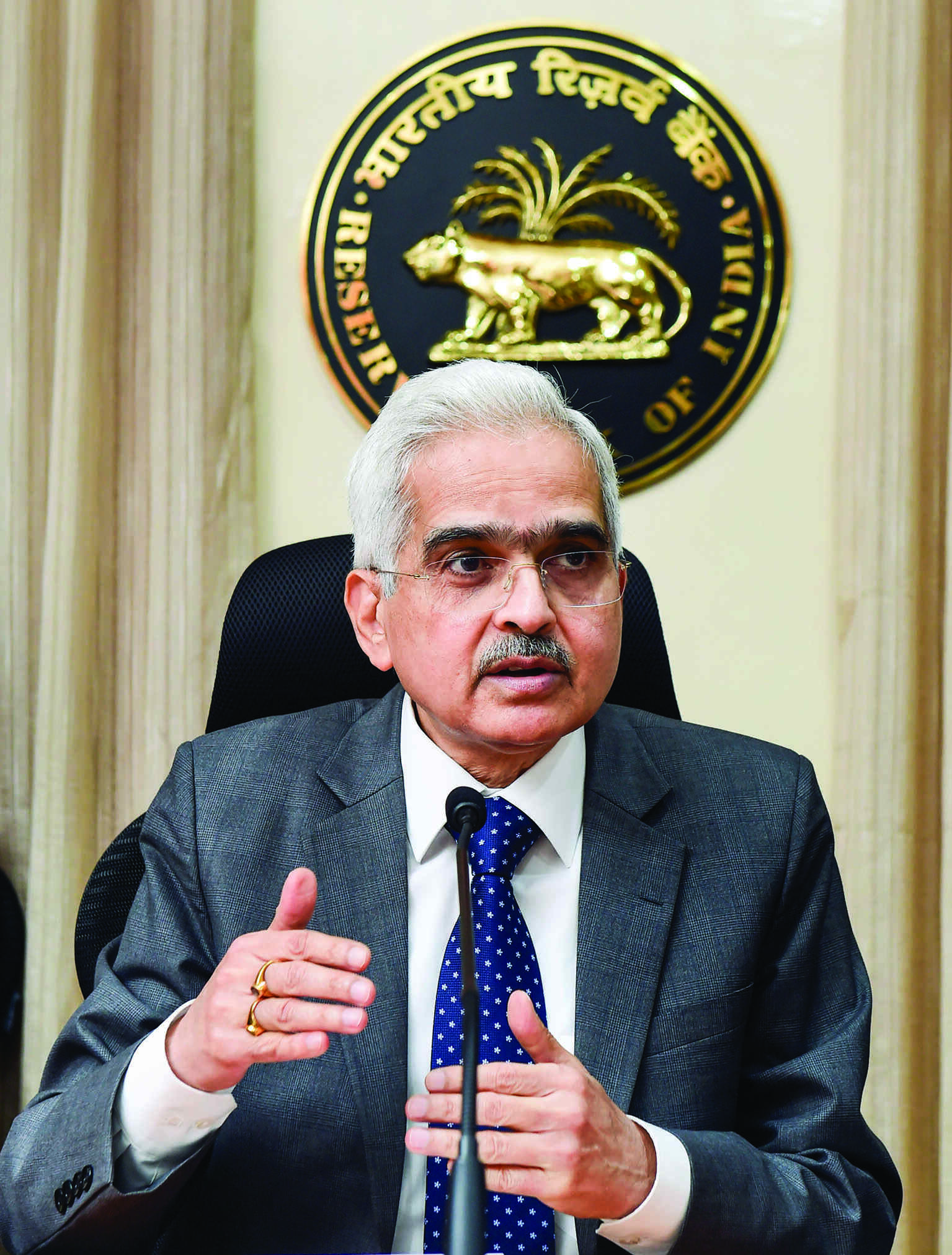RBI hikes repo rate by 50 bps to check soaring inflation

NEW DELHI: The Reserve Bank of India (RBI) on Wednesday hiked the key repo rate by 50 basis points (bps) to 4.90 per cent in a bid to tame the soaring inflation in the country.
This is the second straight hike by the central bank in two months and is expected to hike borrowing costs for corporates and individuals.
Amid the rising inflationary pressure in India, the RBI had in an off-cycle move hiked the repo rate by 40 bps in a surprise meet of the MPC in May.
The Reserve Bank retained its GDP growth forecast at 7.2 for the current fiscal but cautioned against negative spillovers of geopolitical tensions and a slowdown in the global economy. Announcing the third monetary policy of 2022-23, RBI Governor Shaktikanta Das said the available information for April and May 2022 indicates that the recovery in domestic economic activity remains firm, with growth impulses getting increasingly broad-based.
Manufacturing and services purchasing managers' indices (PMIs) for May point towards further expansion of activity.
This is also corroborated by the movements in railway freight and port traffic, domestic air traffic, GST collections, steel consumption, cement production and bank credit. While urban demand is recovering, rural demand is gradually improving, Das said.
"Looking ahead, real GDP is expected to broadly evolve on the lines of the April 2022 MPC resolution. The forecast of normal south-west monsoon should boost kharif sowing and agricultural output.
"This will support rural consumption. The rebound in contact-intensive services is expected to sustain urban consumption," he said.
Home, auto and other loan EMIs will rise after the RBI raised the key interest rate by 50 basis points, the second increase in five weeks, to rein in a rise in prices that was seen continuing to hurt consumers in the near term.
The increase in lending rate or the repurchase rate (repo) by 50 bps — the biggest in more than a decade — to 4.90 per cent comes on the back of a 40 bps hike last month at an unscheduled meeting that kicked off the tightening cycle.
While food, energy and commodity prices remain elevated, it suggested that most of the excess inflation is due to global/supply-side factors. Retail inflation in April accelerated to 7.79 per cent from a year earlier.
Das noted that the negative spillovers from geopolitical tensions; elevated international commodity prices; rising input costs; tightening of global financial conditions; and a slowdown in the world economy continue to weigh on the outlook.
He said the Ukraine-Russia war has led to globalisation of inflation and is posing new challenges, as the central bank upped the inflation projection to 6.7 per cent for the current fiscal year.
In April, RBI had projected retail inflation at 5.7 per cent for 2022-23.
"We navigate through this difficult period," Das said, emphasising the need to be sensitive to the new realities and incorporating them into "our thinking".
Das said the war has posed new challenges as it continues to linger. It is accentuating the existing supply chain disruptions, resulting in elevated prices of food, energy and commodities across the globe.
"Countries across the world are facing inflation at decadal highs and persistent demand-supply imbalances. The war has led to globalisation of inflation. Inflationary pressures have become broad-based and remain largely driven by adverse supply shocks," Das said.
"Taking all these factors into consideration, the real GDP growth for 2022-23 is retained at 7.2 per cent, with Q1 at 16.2 per cent; Q2 at 6.2 per cent; Q3 at 4.1 per cent; and Q4 at 4.0 per cent, with risks broadly balanced," the Governor added.
The central bank earlier in April slashed the GDP growth projection for 2022-23 to 7.2 per cent from its earlier forecast of 7.8 per cent.
On Tuesday, the World Bank cut India's economic growth forecast for the current fiscal to 7.5 per cent as rising inflation, supply chain disruptions, and geopolitical tensions taper recovery.
It was the second time that the World Bank has revised its GDP growth forecast for India in the current fiscal 2022-23 (April 2022 to March 2023).
India's economy grew by 4.1 per cent in the January-March quarter of 2021-22.
The Governor further said experience teaches that preserving price stability is the best guarantee to ensure lasting growth and prosperity.
"Our actions today will impart further credibility to our medium-term inflation target, which is the central tenet of a flexible inflation targeting framework," Das added. He further said India's recovery is proceeding apace, offering the RBI space for an orderly policy shift.
Das stressed that amid the current difficult and challenging times, the Indian economy has remained resilient, supported by strong macroeconomic fundamentals and buffers. The recovery has gained momentum despite the pandemic and the war. He also assured that similar to the RBI's resolute and timely actions to limit the economic damage emanating from the Covid pandemic, the central bank will continue to be proactive and decisive in mitigating the fallout of the ongoing geopolitical crisis on the Indian economy.



